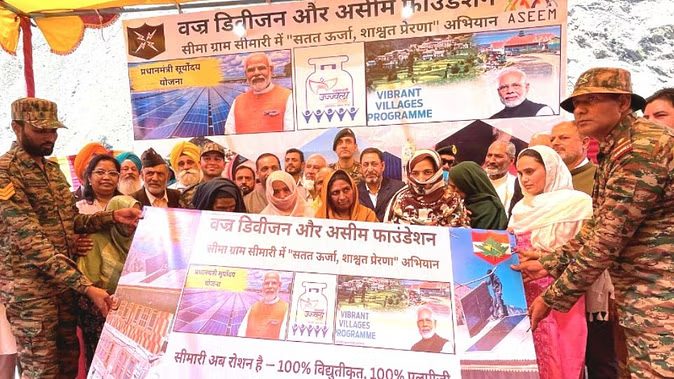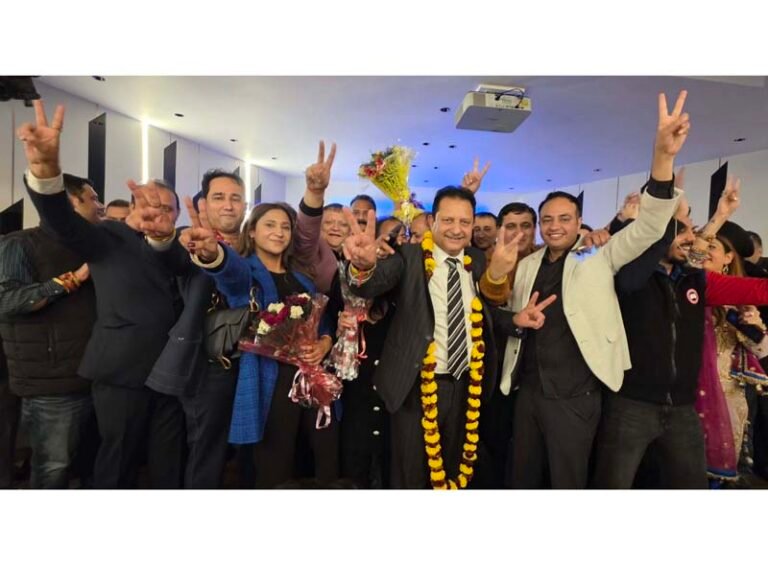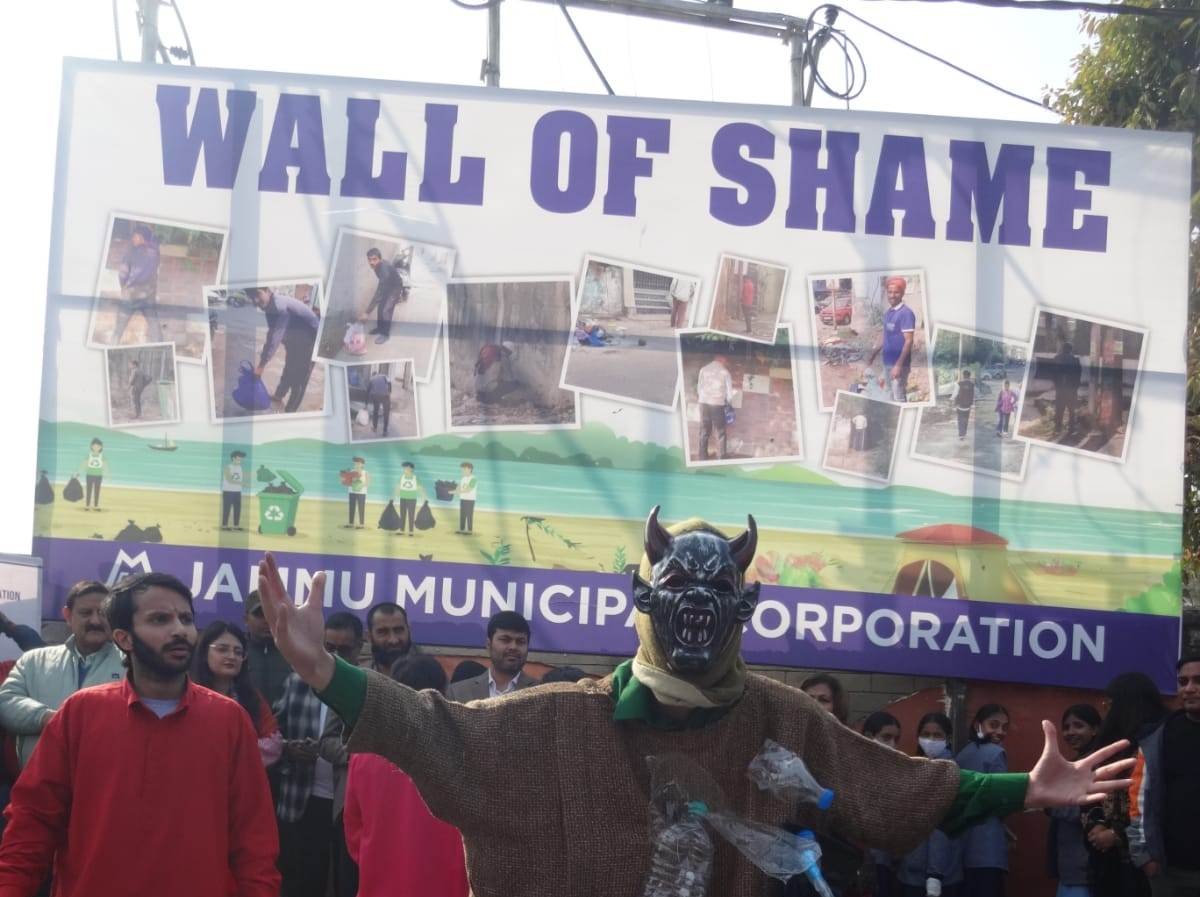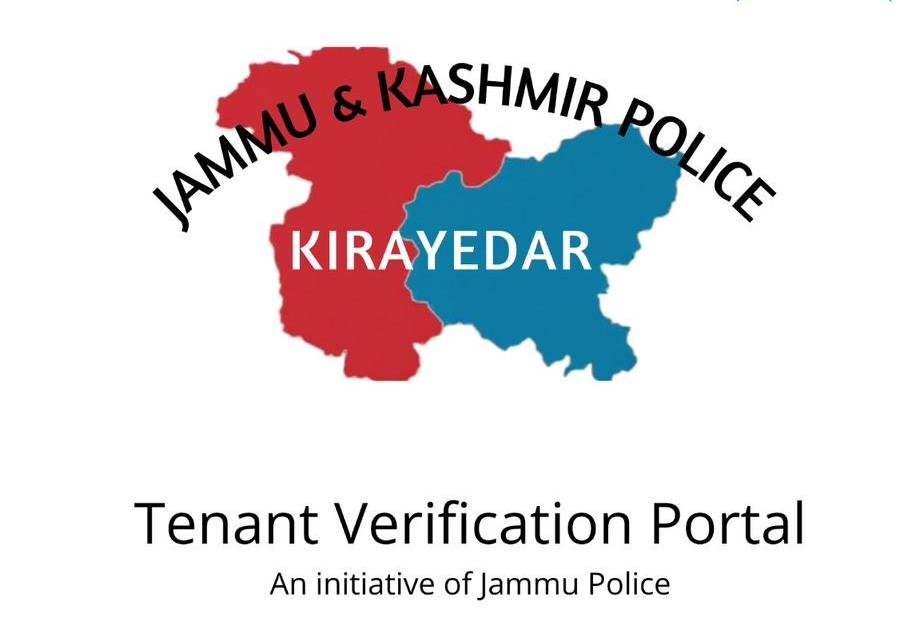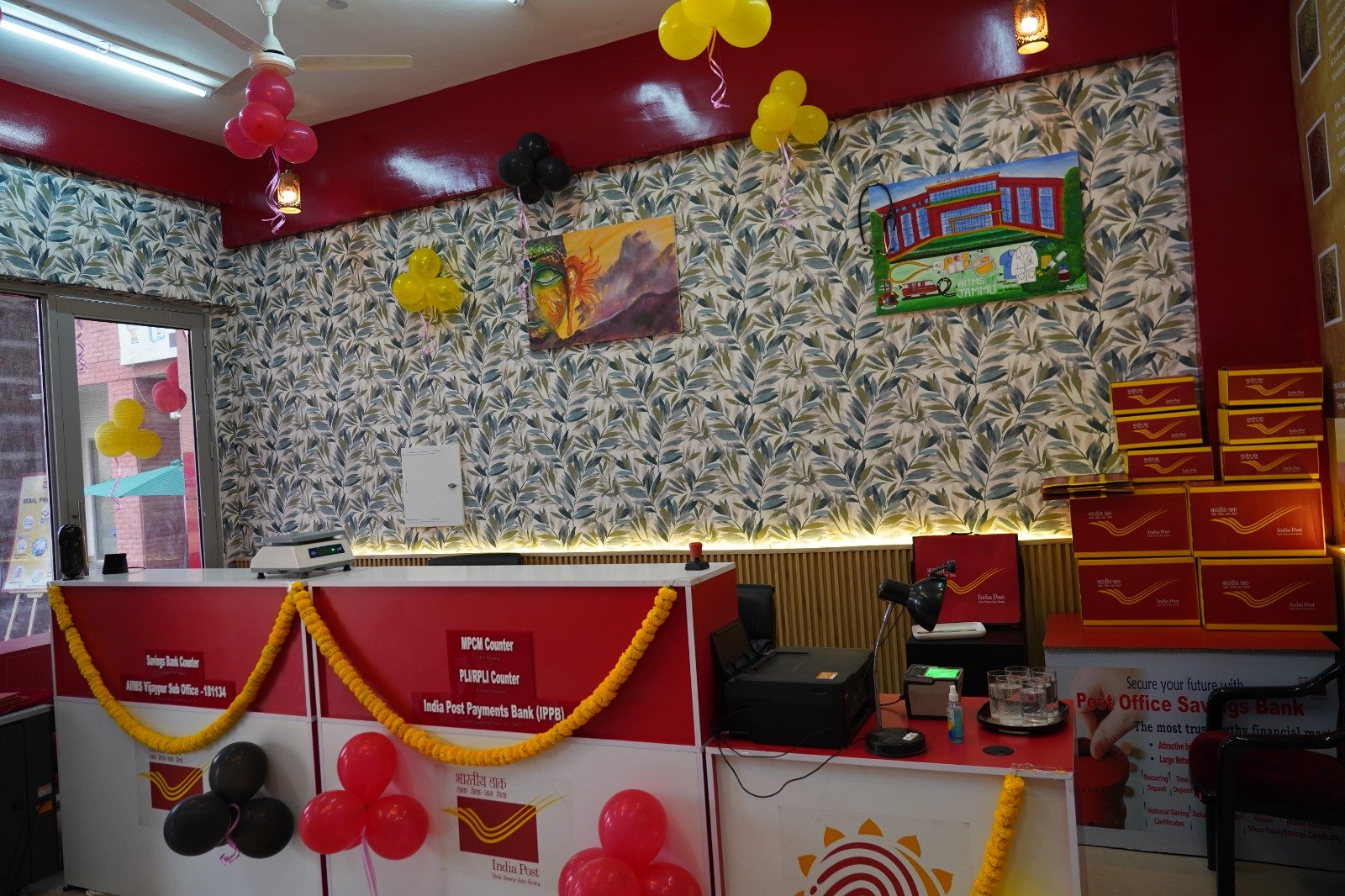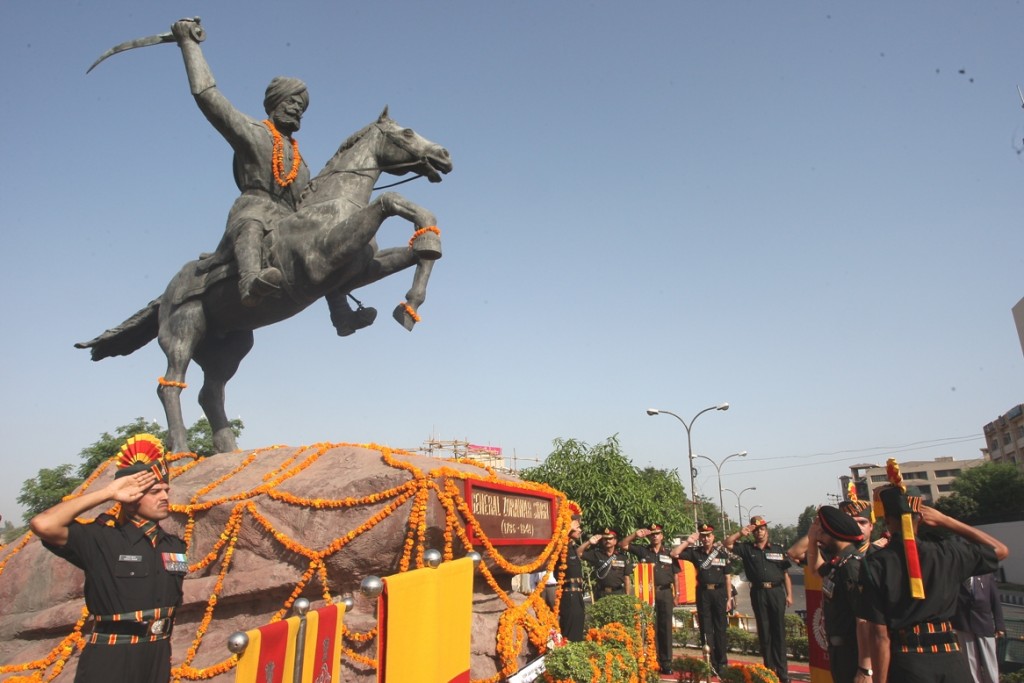Nestled along the India-Pakistan Line of Control (LoC), Simari village in the Karnah Valley of Kupwara district, North Kashmir, has made history. Known for being India’s first polling booth village, Simari has now been electrified for the first time since Independence. This monumental transformation, made possible through the efforts of the ASEEM Foundation and the Indian Army’s Vajra Division (Chinar Corps), marks a new dawn for the 53 families who call this border village home.
Lighting Up the Border: First-Time Electrification Through Solar Microgrids
In a region that has long remained in the shadows of development due to its proximity to the LoC, Simari village has now been fully electrified using solar-powered microgrids. Along with electricity, families also received LPG kits for clean cooking, putting an end to decades of dependence on traditional fuels.
This initiative, led by Pune-based ASEEM Foundation in partnership with the Indian Army, brings not just light to homes, but also hope for education, better health, and economic upliftment. The solar electrification project ensures sustainable and cost-effective power, tailored for remote and underserved areas.
Voices from the Village: A Dream Finally Realized
The impact of this milestone is best reflected in the voices of the villagers, many of whom are experiencing electricity for the very first time.
“It is happiness, it is joy, and it is freedom,” said the village head, tears in his eyes. “Our children can now study without struggling in the dark. This has fulfilled a decades-old dream. We are deeply thankful to ASEEM Foundation, especially its president Sarang Gosavi, who brought light to our lives—literally and emotionally.”
Another villager, aged 81, shared a lifetime of waiting:
“I had never seen electricity in my entire life. Today, I feel blessed that my grandchildren will grow up in a lit home. It’s something we never imagined. I thank the ASEEM Foundation and the Indian Army for making the impossible, possible.”
Strategic and Democratic Significance of Simari
Simari isn’t just any village—it holds strategic importance due to its location and democratic value as India’s polling booth No. 1. Despite these roles, the community had long struggled with no electricity and outdated cooking tools. This project doesn’t just provide essential utilities—it reaffirms India’s commitment to inclusive development, even in its most remote and conflict-prone areas.
Project Features: Clean Energy, Power Limiter & Equity
According to Sarang Gosavi, Chairman of ASEEM Foundation:
“This project has significantly improved the quality of life for Simari’s 53 families by providing them access to solar energy and clean cooking solutions.”
An innovative feature of the project is the power limiter, a tool that ensures equitable power distribution among households and promotes sustainable energy use. By controlling power consumption per household, it avoids overuse and keeps the system efficient and cost-friendly.
A Tribute to a National Hero: Colonel Santosh Mahadik
The project is dedicated to the memory of Colonel Santosh Mahadik, recipient of the Shaurya Chakra and Sena Medal, who made the ultimate sacrifice in the service of the nation. His mother, Kalinda Mahadik, along with the Commander of the Tangdhar Brigade and Sarang Gosavi, inaugurated the solar electrification system as a mark of respect and remembrance.
Indian Army and ASEEM Foundation: Empowering Border Villages
The Indian Army’s Chinar Corps, in collaboration with ASEEM Foundation, continues to play a transformative role in empowering border communities. Through a series of initiatives focused on rural electrification, clean energy adoption, and grassroots development, they are lighting up not just homes—but lives.
The Army stated:
“Our mission goes beyond security; it includes community development and empowerment. Together with ASEEM Foundation, we aim to create self-sufficient and resilient villages across the LoC region.”
Extending the Impact: Solar Projects in Other Remote Areas
Simari is not the only village to benefit. The ASEEM Foundation has successfully implemented solar grid projects in other isolated villages including:
- Gagar Hill
- Jabri
- Sumwali
- Chutali
- Refugee-1
- Refugee-2 (Gurez Valley)
These projects have brought consistent power, clean cooking options, and community hope to regions once overlooked.
The electrification of Simari village stands as a shining example of what collaborative efforts between civil society and the armed forces can achieve. It’s more than just turning on a light—it’s about restoring dignity, enabling education, improving health, and igniting dreams.
As India looks to the future, empowering its border communities with clean energy and essential services must remain a national priority. Simari’s success story serves as a beacon for rural electrification, sustainable development, and national unity.

